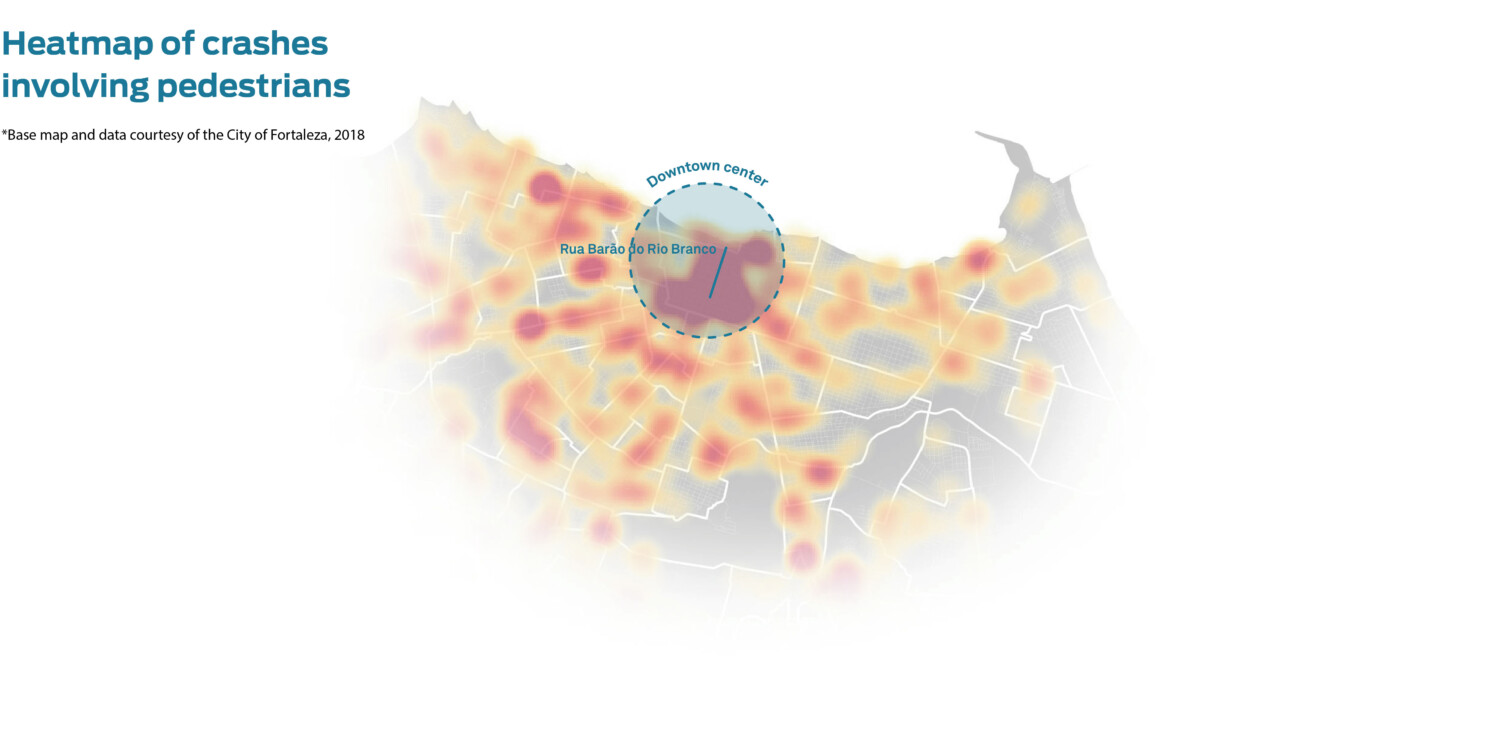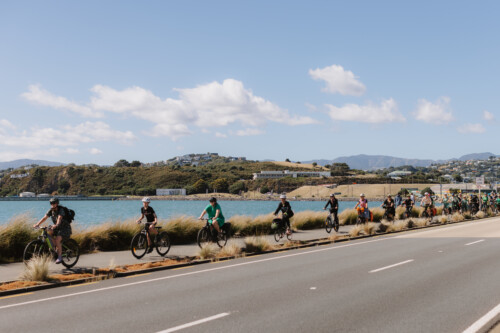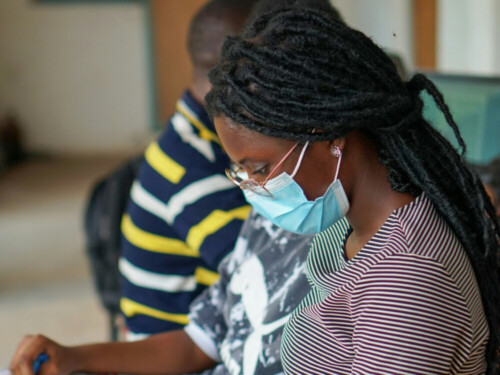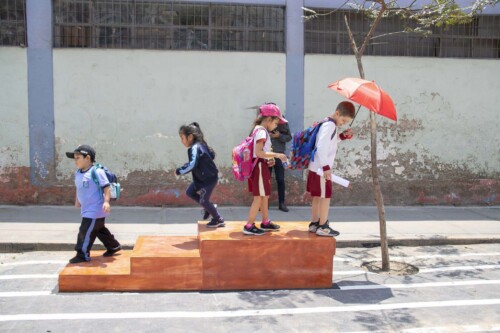
Scale and Sustainability: Highlights of the Streets for Kids 2023 Projects
Learn how street transformations designed for children can be scaled up and made permanent.
Within an ambitious city-wide vision to promote road safety and sustainable mobility, the City of Fortaleza, Brazil, took another major step towards making its streets safer and more walkable—this time, in the heart of the city’s commercial center.
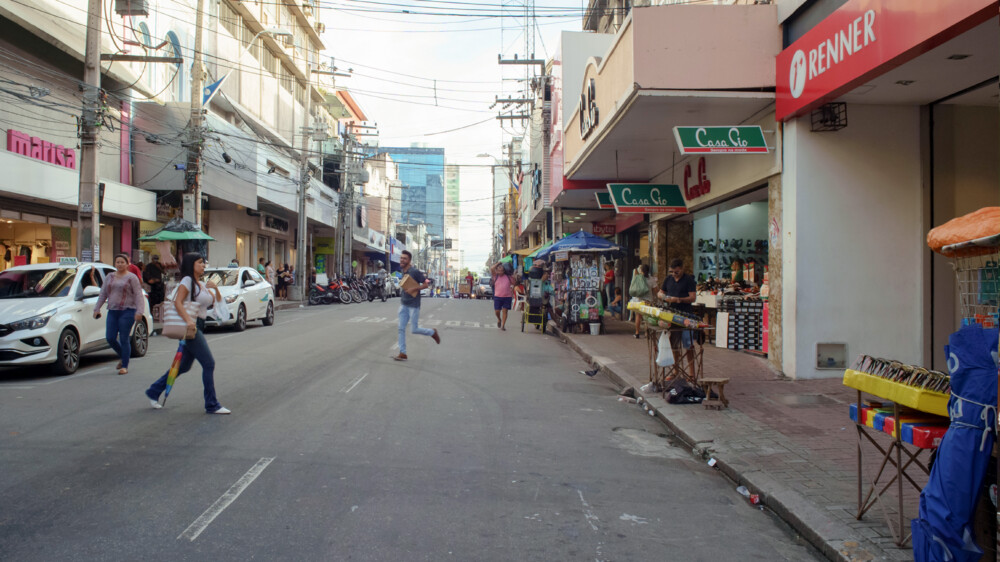
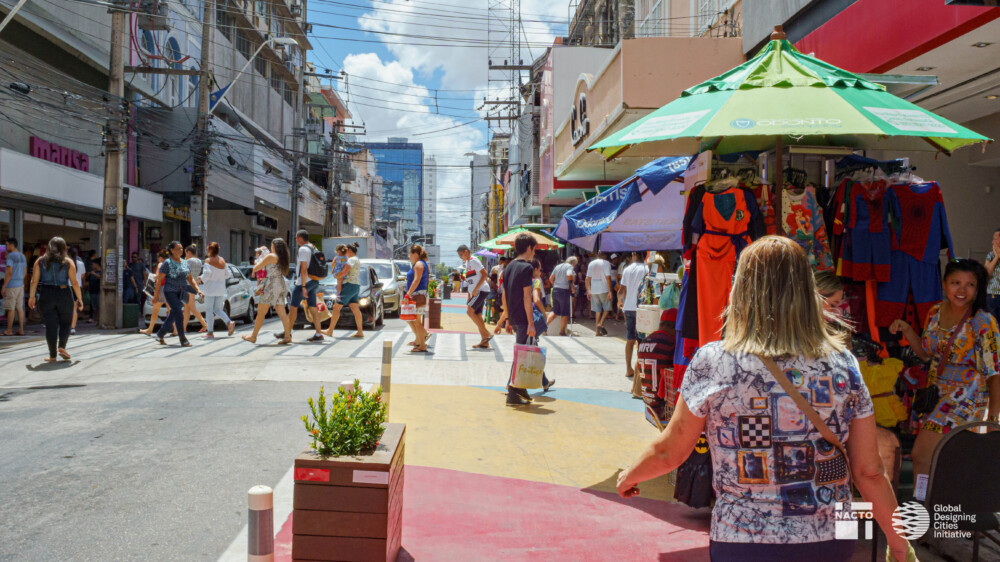
Prioritizing pedestrian safety in Downtown Fortaleza is critical, as the proportion of crashes involving pedestrians in this area is 70% higher than the rest of the city. Despite road safety improvements made in the past decade, 91 pedestrians were killed in the streets of Fortaleza in 2018. This tragic reality stems from the fact that sidewalks are often too narrow, obstructed, inaccessible, or non-existent, and pedestrians are accordingly forced to mix unsafely with motor vehicles, whom most of the streetscape is designed for.
One area where pedestrians are most vulnerable to the negative impact of car-centric street design is in Downtown Fortaleza, along the dense commercial street, Rua Barão do Rio Branco. There, before the City’s intervention, 67% of the street space was allocated for motorized vehicles, although that mode accounts for less than 25% of the street users. Pedestrians, who account for 75% of the street users, had to fight for the space that was left, so it was no surprise that over 200 people per hour were walking on the roadbed before the transformation.
With design and metric-collection support from NACTO-GDCI, the City redesigned Barão do Rio Branco Street by reclaiming one travel lane and repurposing it as an interim sidewalk extension. Many pedestrians who were forced to overflow off of the narrow and packed sidewalks onto the road-bed, now have a safe and accessible space to walk, window-shop, sit and stay on their street.
By employing low-cost and fast-implementation materials such as paint, benches, bollards, and planters, the interim intervention allows for testing the redesign and evaluating its impact, which inform the design of the permanent transformation in the future. The project team also developed a metrics collection methodology that generates performance indicators focused on all street users (as opposed to only measuring traffic flow).
The narrowed travel lanes, redesigned intersections, and new pedestrian crossings reduce the risk of crashes. The proportion of motor vehicles moving over 30 km/h and 40 km/h dropped by 65% and 84% respectively, and the number of pedestrians walking outside designated facilities was reduced by 92%. One of the new raised crossings allows nearly one thousand pedestrians per hour to cross the street safely.
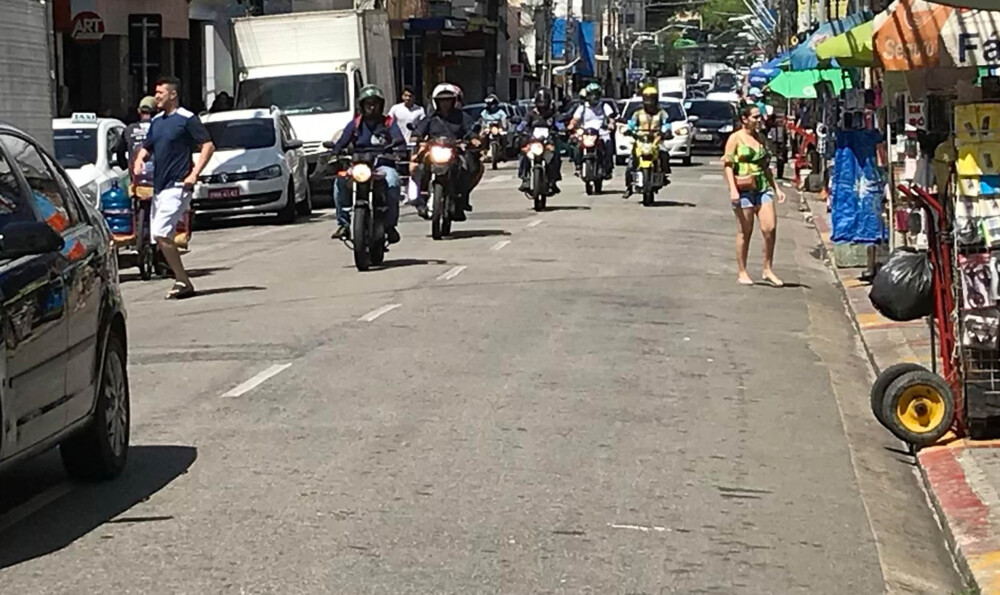

This street transformation ensures a safe environment for all pedestrians, but especially benefits seniors, children and their caregivers, and people with disabilities. It has also made it easier and safer to deliver goods with hand carts to the many shops along this commercial stretch.
In line with the central borough’s efforts to regularize and organize street vendors in the city center, the city provided standardized kiosks to accommodate street vendor’s activities in several streets in downtown Fortaleza. On Barão do Rio Branco Street, vendors who previously partially obstructed the sidewalk clear path have been organized in new kiosks, aligned with existing light poles and street furniture to ensure that the clear path can be continuous and unobstructed.
In the days that followed the implementation of this project, there was a major spike in the number of people using the newly added street furniture. On average, 65% more people linger and spend time at Barão do Rio Branco street since the redesign. We expect these results to prove that prioritizing walkability, safety, and street activity will not only improve public safety for everyone and curb road fatalities, but also set yet another precedent for more efficient, sustainable, and vibrant streets in Fortaleza.
[metaslider id=”28372″]
——————–
This collaboration between NACTO’s Global Designing Cities Initiative and the City of Fortaleza is made possible thanks to generous support from the Bloomberg Philanthropies Initiative for Global Road Safety (BIGRS).
Written by Eduardo Pompeo and Majed Abdulsamad
Designed by Kat Gowland
Translated by Eduardo Pompeo and Eduarda Aun
Please contact eduardo@nacto.org with inquiries related to this project.
——————–
Learn how street transformations designed for children can be scaled up and made permanent.
Global giants Janette Sadik-Khan (Transport Principal, Bloomberg Associates and Chair of Global Designing Cities Initiative), and Salvador Rueda (Director of Urban Ecology Agency of Barcelona) arrived in New Zealand’s capital to back the sustainable street changes that are putting people at the heart of Wellington’s streets.
With the support of the Clean Air Fund, GDCI will help reduce harmful PM2.5 air pollution, focusing on one of the most at risk groups, children.
